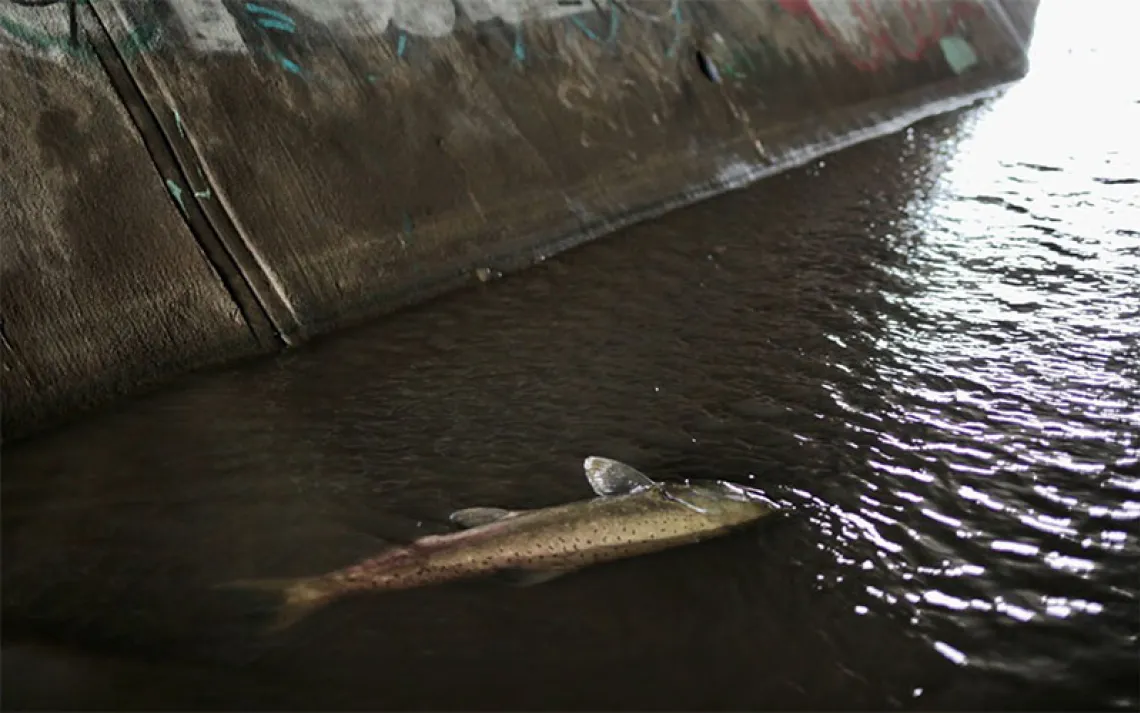Does Science Really Guide the Way We Manage Wildlife?
Study suggests management agencies fail to detail scientific influence on decisions

Photo by Jean-Guillaume Bertola/iStock
Hunting in the United States and Canada is very different than in other parts of the world. Over the last 150 years, the hunting community and managers have developed a system called the North American Model of Wildlife Conservation. In short, in other places, like Europe, wild game is considered the property of private landowners. In North America, things are more democratic—wildlife is considered a public trust, one that needs to be managed as a sustainable public resource for the benefit of everyone. And to make sure that happens, the model dictates that decisions for how to keep herds of elk, deer, bear, and other animals healthy be based on the best available science.
But in a new paper in the journal Science Advances, researcher Kyle Artelle, formerly of Simon Fraser University in British Columbia, and his colleagues take a look at whether hunt management systems in the United States and Canada hew to some basic scientific standards. What they found is that a majority fail to meet the four hallmarks they map out, which they say act as a litmus test for science-based claims.
Looking at 667 hunt management systems regulating 27 species across 62 U.S. states and Canadian provinces, the team assessed four measureable hallmarks of science-based plans by reviewing the publically available hunt management documents posted by the agencies online. If those materials were unavailable or incomplete, the team emailed the agency for more information.
The four hallmarks include whether the management plan has a measurable objective, like managing a deer herd to balance the population at a number that makes hunters happy and also reduces car crashes. They also looked at whether the management plans were evidence-based, how transparent the plans were about how they estimate hunting rates and population sizes, and whether the plans undergo an independent review.
The results weren’t encouraging. Fewer than 60 percent of the plans analyzed met half the criteria. Only 9 percent of the plans spelled out how their hunting quotas were set. Only 10 percent underwent some sort of review process, and only 6 percent underwent external review. “That was a bit of a surprise,” says Artelle, now a biologist with the Raincoast Conservation Foundation and a postdoc at the University of Victoria. The criteria weren’t meant to be difficult, either. “We were asking fairly straightforward questions and we found less than half of management systems met the criteria in cases where a scientific basis is claimed.”
Of course Artelle and his team understand that when it comes to managing wildlife, many other factors besides science are involved. Politics often influences decisions about things like wolf and bear management. Public opinion—whether science-based or not—plays a big role as do factors like finances. But to the extent they can, the team believes biologists and ecologists should show the public where the science ends and where other factors play a role. “We are not saying that wildlife hunting decisions should be based only on science, as there can be important social and economic considerations,” Simon Fraser University biologist and coauthor John Reynolds says in a statement. “But the extent to which these dimensions influence management decisions should be clearly articulated alongside claims of scientific rigor.”
The impacts of not following transparent, scientific best practices aren’t hypothetical. Artelle says he undertook this particular study after working on another in 2013. At the time, British Columbia had instituted a controversial grizzly bear hunt, now ended. In that study, the researchers found that uncertainties in management models led to higher mortality rates in bears than expected.
The team hoped their work would be incorporated in a revised management plan. Instead, the hunt quota was increased with no public explanation. “Politicians weren’t talking about whatever was happening behind the scenes leading to the hunt,” Artelle says. “What the public was told was that the decisions were science-based without putting the science on display.”
Not everyone agrees with Artelle's conclusion that wildlife management is not currently science-based. Steven Williams, former director of the U.S. Fish and Wildlife Service and president of the Wildlife Management Institute, which consults with wildlife agencies, says there is a lot of science going on in management agencies across North America. The fact that the research is not laid out for the public does not mean the work is not happening.
“I can tell you state agencies have a variety of survey and monitoring efforts that go on for hunted species and those that aren’t hunted,” he says. “Science has to inform those decisions; it has to and it does. Then there is the social and political part, which is just part of the world we live in. Biologists present information to decision-makers, whether that’s at the agency level, legislators, or a game commission, and that’s incorporated with public input.”
“[Wildlife management is] a noble endeavor. People are as dedicated as in any profession, to a person everyone is out there doing the best they can with limited resources,” Williams says. “People in their profession care terribly about their resources, whether they’re working on endangered species or heavily hunted species like white-tailed deer. Both care about the resources and try to help decision-makers make the best choices.”
Artelle does not disagree that biologists do exemplary work. But he argues that hard work needs to be seen by the public within the management plans, not hidden away in computer files or memos. As enthusiasm for a grizzly hunt around Yellowstone gains steam in the United States, Artelle says he’s seeing some of the same things he saw in British Columbia, where managers claimed policies were science-based, though that science never materialized. “A scientific basis and credible evidence for management practices is something everyone can get behind: hunters, the public, conservationists,” he says. “It’s hard to find a stakeholder saying we don’t want evidence to support this. We just hope this study can be the start of a broader conversation about the role of science in wildlife management going forward.”
 The Magazine of The Sierra Club
The Magazine of The Sierra Club



